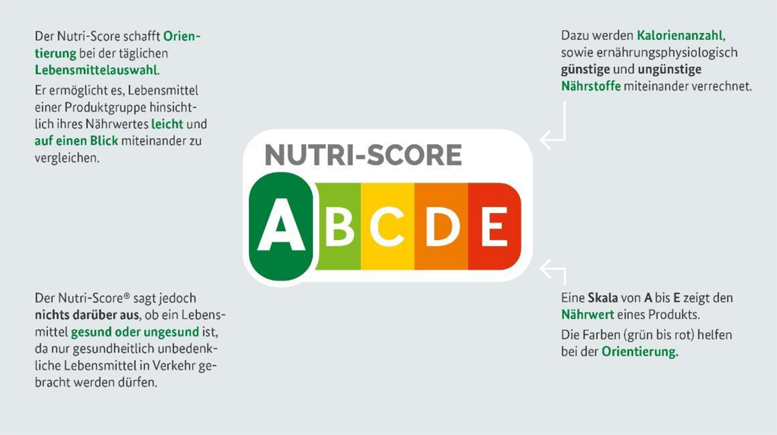Nutri-Score labeling takes another step forward
At the same time, the Ministry is in the process of quickly creating practical simplifications for companies to use the Nutri-Score. The Ministry has published German translations of the French texts for the registration procedure and the conditions of use for Nutri-Score on its website as an aid. This takes into account the needs of small and medium-sized companies in particular. In addition, the introduction of the label will be accompanied by an information campaign for consumers and the economy. The aim of the measures is to use the Nutri-Score as comprehensively as possible.
The national introduction of extended nutritional information is not mandatory under current EU law. Accordingly, the Nutri-Score is not mandatory in France or Belgium, nor is the keyhole system in Scandinavia. During Germany's current EU Council Presidency, Federal Minister Julia Klöckner therefore wants to push ahead with the development of an EU-wide, uniform, extended nutritional label.
Julia Klöckner: "We are about to successfully implement one of the major nutritional policy projects. We have shown that the Nutri-Score offers consumers easily understandable and comparable information. For consumers, it offers the best orientation on the supermarket shelf. It's not possible about renunciation, but about the better alternative, about conscious decision-making options without having to study lengthy nutritional tables. These will remain on the back. But there will be a visually clear guide on the front. If there is too much fat, sugar or salt , the rating will become less favourable. I have a clear expectation that companies will use the label! We are creating the conditions for this."

background objects
The Nutri-Score makes it possible to record the nutritional properties of a food at a glance and to compare different products within a product group in terms of their nutritional value. The placement on the front of the packaging allows this distinction to be made at first glance. The five-level color-letter combination of the Nutri-Score ranges from a green A to a red E and indicates the nutritional value of a food. Within a product group, a food with a green A rating contributes more to a healthy diet than a product with a red E. However, the Nutri-Score does not say anything about whether a food is healthy or unhealthy, as only foods that are harmless to health are placed on the market may be.
Further information can be accessed via the following link: https://www.bmel.de/
